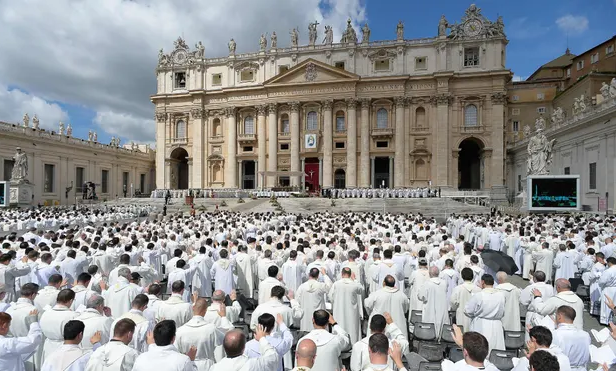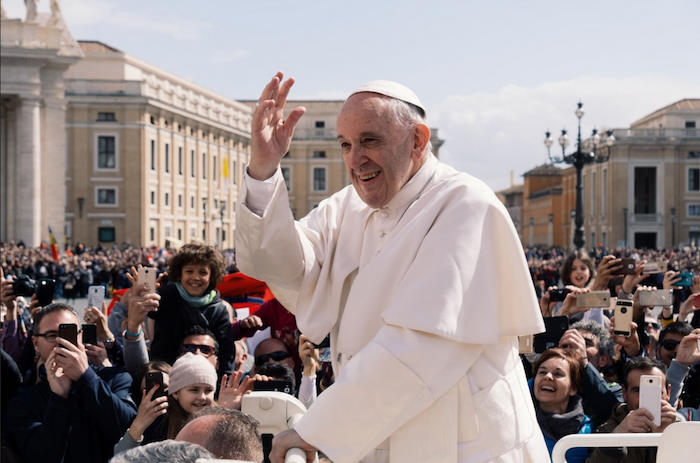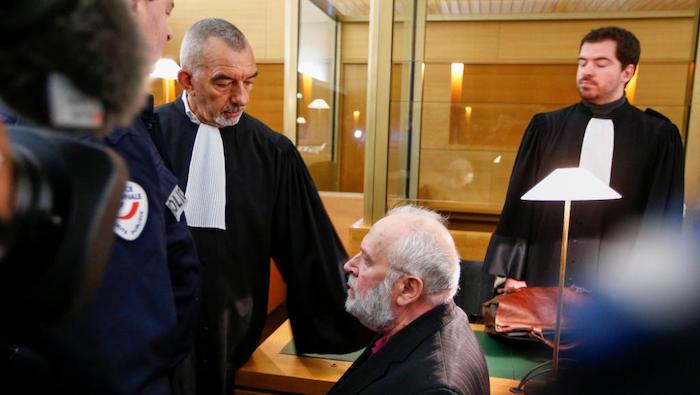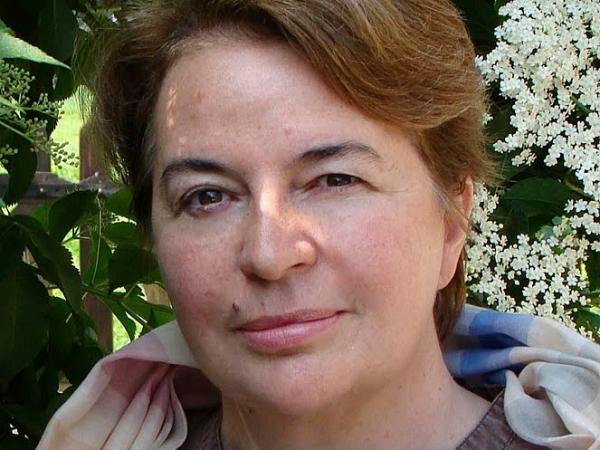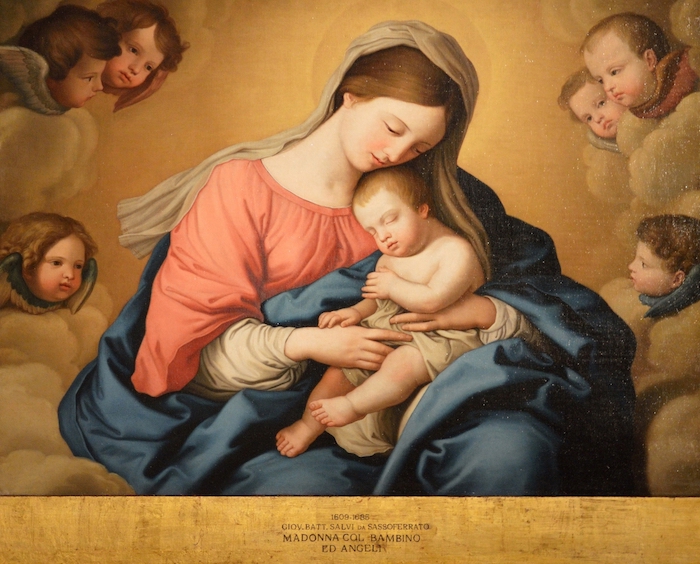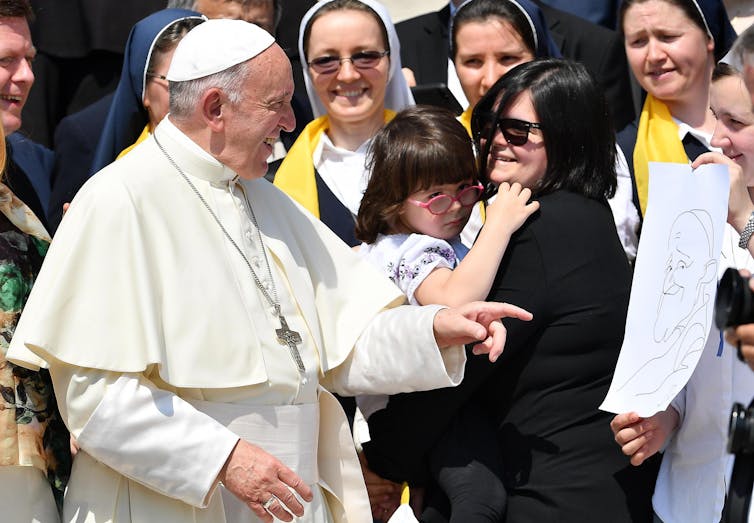Her Parents Had No Idea.
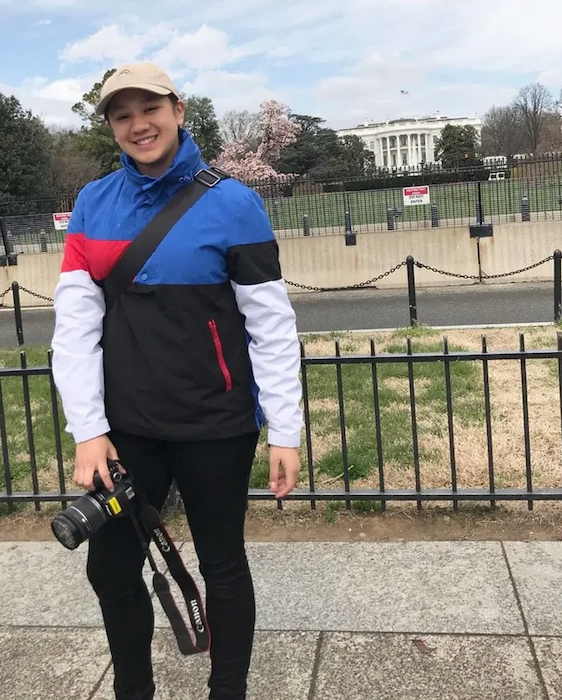
By Claudia Koerner
“They took it upon themselves to parent our daughter, to counsel her, to lecture her,” her mother said.
UPLAND, California — Magali Rodriguez said she didn’t kiss her girlfriend at school.
At Bishop Amat Memorial High School, the biggest Catholic school in the Los Angeles area, it wasn’t against the rules to be gay — Rodriguez at one point checked the student handbook. But she knew not everyone on campus would approve of their relationship, so she said they didn’t go in for the typical high school public displays of affection.
What she said she didn’t expect was for school staff to single her out for her sexuality: She said she was forced into disciplinary meetings and counseling, barred from sitting next to her girlfriend at lunch, and kept under close eye by staff members. If she didn’t follow these rules — which didn’t apply to straight students in relationships — school officials threatened to out her to her parents, she said.
Rodriguez, a high school senior, tried to stay positive and get through it, but after more than three years, she was at breaking point. She was crying every day before school, her grades suffered, and spending time on campus brought intense waves of anxiety. So she decided to speak up — first to her parents and now publicly.
“I really don’t want it to happen to anybody else,” she told BuzzFeed News.
When Rodriguez’s parents heard their daughter’s story, they pulled her out of the suburban LA school known locally for its academics and sports programs. But in spite of its impressive reputation, the way school staff treated the teen was wrong, her mother said.
“They took it upon themselves to parent our daughter, to counsel her, to lecture her,” Martha Tapia-Rodriguez said.
School officials and the Archdiocese of Los Angeles didn’t respond to specific questions, citing student privacy. But a spokesperson disputed the Rodriguezes account, saying it was not “entirely accurate.”
All students are held to the same standards outlined in the Parent/Student Handbook, a school statement said, and Bishop Amat does not discriminate on the basis of race, color, disability, medical condition, sex, or national and/or ethnic origin.
“Any student who is involved in a relationship may socialize appropriately on campus,” the statement said. “However, as stated in the Parent/Student handbook, engaging in excessive displays of affection on campus is not permitted.”

Rodriguez began coming out to friends in middle school, and by the time she started ninth grade, she was dating a sophomore girl. They were the only out couple in the 1,300-coed student body, and while Rodriguez said she knew the Catholic teachings about homosexuality, she initially trusted people would judge her based on who she was, not just her sexuality.
“I was surrounding myself with people that were really involved in their religion, but still accepting,” she said. “So I never thought there was anything bad about it.”
In the second semester of her first year, she said she and her girlfriend were called into separate meetings with their deans of discipline. At first, Rodriguez said she was confused; she’d never been in trouble at school before.
Her dean said there had been complaints about the relationship, it couldn’t happen at school, and it was wrong, Rodriguez said. The teen said she also received a set of rules: No sitting next to her girlfriend at lunch and no meeting up during breaks. The meetings with the dean of discipline would continue, as would sessions with the school psychologist, and staff would be keeping an eye on them. If she followed the rules, Rodriguez said she was told, the school wouldn’t tell her parents.
At that point, she was still figuring out how she wanted to come out to her family. She was scared, so she and her girlfriend agreed.
“We both walked out of that meeting just sobbing,” Rodriguez said.
A few months later, during summer school, the girls were waiting for a ride home when a staff member came up to them. She began berating them, Rodriguez said, telling them they were going to hell, and that she was working to get them expelled. The staff member only left them alone to avoid Rodriguez’s father, Rodriguez said.

The next two years, Rodriguez said she tried to treat her experiences at school as if they were normal. She and her girlfriend attempted to joke to each other about their situation, even as they cried every day before class and when they were summoned to disciplinary meetings. Other students who hadn’t come out noticed, opting to transfer schools or stay in the closet after hearing about what Rodriguez and her girlfriend dealt with, she said.
“We were really afraid on campus,” she said. “We didn’t hold hands, we hardly hugged or anything.”
And they were constantly being watched, Rodriguez said. She recalled a teacher staring them down during a class picnic, even as a straight couple made out nearby. Once, Rodriguez said she dared to move from across the table to sit next to her girlfriend at lunch. A teacher immediately came over to them, taking a position an inch or two away, she said.
“They just had the teachers staked out,” she said.
A friend of Rodriguez’s, Crystal Aguilar, told BuzzFeed News the effect these interactions had on Rodriguez was immense. The girls became friends in middle school, then attended different high schools.
“I [saw] her attitude towards school change drastically. It went from her being motivated to learn and be at school, to her dreading every day she’d go,” Aguilar said. “Her sadness because of it overtook her at times.”
Always proud of her ability to smile through difficult situations, Rodriguez said the daily stress had fully caught up to her when her senior year began in August. She and her girlfriend had broken up, and the older girl — who couldn’t be reached for comment — and other friends had graduated.
Rodriguez’s grades had dropped, and though a bookworm in the past, she was no longer excited to learn and said she felt uncomfortable interacting with teachers who were also keeping watch over her. She’d spend the school day sad and full of anxiety, then come home feeling drained.
“I thought to myself, I don’t know how much longer I can go,” Rodriguez said.
She knew her parents had also seen the change in her, so she penned a letter, revealing to them for the first time what she had been experiencing.
“I’m not OK,” Rodriguez said she wrote. “And I’m not OK being in this type of environment that’s supposed to be lifting me and encouraging me.”
The letter was shocking to her parents, who weren’t surprised she was gay but by how she said she was treated by the school.
“It sounded like a suicide letter,” her father, Nicolas Rodriguez, said. “It was a huge cry for help.”
The way gay and lesbian students are treated at Catholic schools varies across the US, said Francis DeBernardo of New Ways Ministry. The LGBTQ Catholic group offers resources for teachers and administrators, as well as parents on the church’s positive teachings. Simply put, the church says being gay or lesbian isn’t considered a sin, though sexual activity between people of the same sex is, he said.
“Mostly, it says we have to accept people,” he said.
But high schools’ written policies often avoid the issue, and while surveys have shown most Catholics support marriage equality, critical voices can end up being the loudest in a church community, he said. Still, LGBTQ Catholics deserve the support of schools and parishes, he said.
“As a baptized Catholic, they belong to the church community,” DeBernardo said. “They have gifts they can offer to the church community, but unfortunately, not all church community members are going to recognize that.”
It’s reasonable for a Catholic institution to take a stand against sexual activity outside of marriage, he said. But that shouldn’t mean a different set of standards for LGBTQ students, such as who they can take the school dances.
“They should handle it the way they handle any student in a relationship,” DeBernardo said.
Rodriguez is now set to finish the year at another local high school. For the first time in years, she said she feels like she can breathe.
“I wouldn’t be proud if I got a diploma from Bishop,” she said. “What they showed me about what they stand for and their true values isn’t what they really live up to.”
Complete Article ↪HERE↩!
